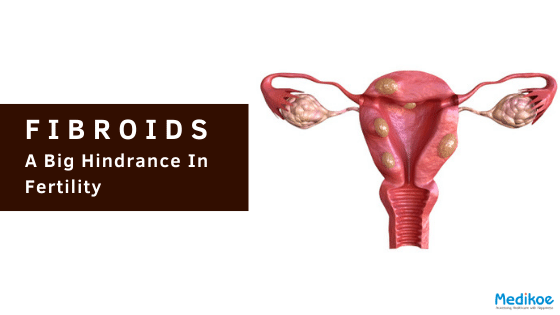Fibroids: A Big Hindrance In Fertility
Author : Dr. Monica Sachdeva
Date : 20 Nov 2019
Many different factors can play a role in affecting the ability to get pregnant and deliver a healthy baby. One of them which affects about 20-50% of women of reproductive age and 25%-40% of Indian women is uterine fibroids. They are a common condition and often run in families. If your mother had fibroids, there's a good chance you might have them, too.
What are Fibroids?
Uterine fibroids are benign (non-cancerous) tumours that occur in the muscle tissue of the uterus. Women usually have more than one fibroid, and they vary in size and location; their size is often described by fruit, e.g., the size of a grapefruit. They can change both the size and shape of the uterus and affect the cervix. It is size and location that often affect whether you experience symptoms, experience infertility and need treatment.
What are the types of fibroids?
Three different significant types of fibroids differ based on where they are located:
- Subserosal are in the outer wall of the uterus (55%)
- Intramural is found in the muscular layers of the uterine wall (40%)
- Submucosal protrude into the uterine cavity (5%)
However, the exact cause of fibroids development is still unclear, but genetics, hormones, and environmental factors all likely play a role.
Transvaginal ultrasound and MRI are useful in diagnosing fibroids.
Can Fibroids Cause Infertility?
It's a complex debatable issue. 5-10% of women facing infertility have fibroids, and it is their size and location which may create problems. Fibroids that are very large – greater than 4 centimetres in diameter – and those located inside the uterine cavity are examples of situations where fibroids may affect the ability to get pregnant and deliver a healthy baby — only submucosal fibroids which protrude into the uterus that may affect fertility. Sometimes when large fibroids block the openings of fallopian tubes into the uterus or disturb the tubo-ovarian anatomy leading to infertility. Fibroids very often alter the blood flow to the uterine cavity and the thickness of uterine lining such cases present with recurrent IVF failures or miscarriages.
Many times, fibroids don't result in any symptoms and are accidentally detected once fertility specialist evaluates for infertility.
Will the removal of fibroids to improve my fertility?
Treatment of fibroids is very individualistic depending on the severity of symptoms or whether there are disturbing the endometrial cavity. There are many hormonal treatments available but only surgery, often minimally invasive, can eliminate any given fibroid permanently. Other treatments that use ultrasound, electrical energy, embolization or medications can often make a given fibroid smaller, but sometimes only temporarily. Furthermore, new fibroids may grow after treatment. There is also disagreement over whether treatment will improve your fertility.
Research to date only supports treatment for submucosal fibroids as it does result in increased pregnancy and live birth rates.
Research is weak and does not support treatment for other types of fibroids based on comparing outcomes for pregnancy and live birth rates for women receiving treatment and those not receiving treatment.
Can fibroids harm pregnancy?
We should keep an eye on fibroids during pregnancy because they may grow larger and create complications like severe pain and miscarriage. Only 2-12% of pregnant women have fibroids, and if they do grow, it will most likely be during the first 12 weeks.
Fibroids affect women of reproductive age group; at that time, they have to be pregnant.
So if fibroids are there, the doctor should be consulted for an assessment of their size, number and location. It is worth seeking treatment for fibroids before any assisted reproductive technology like IVF or IUI.

